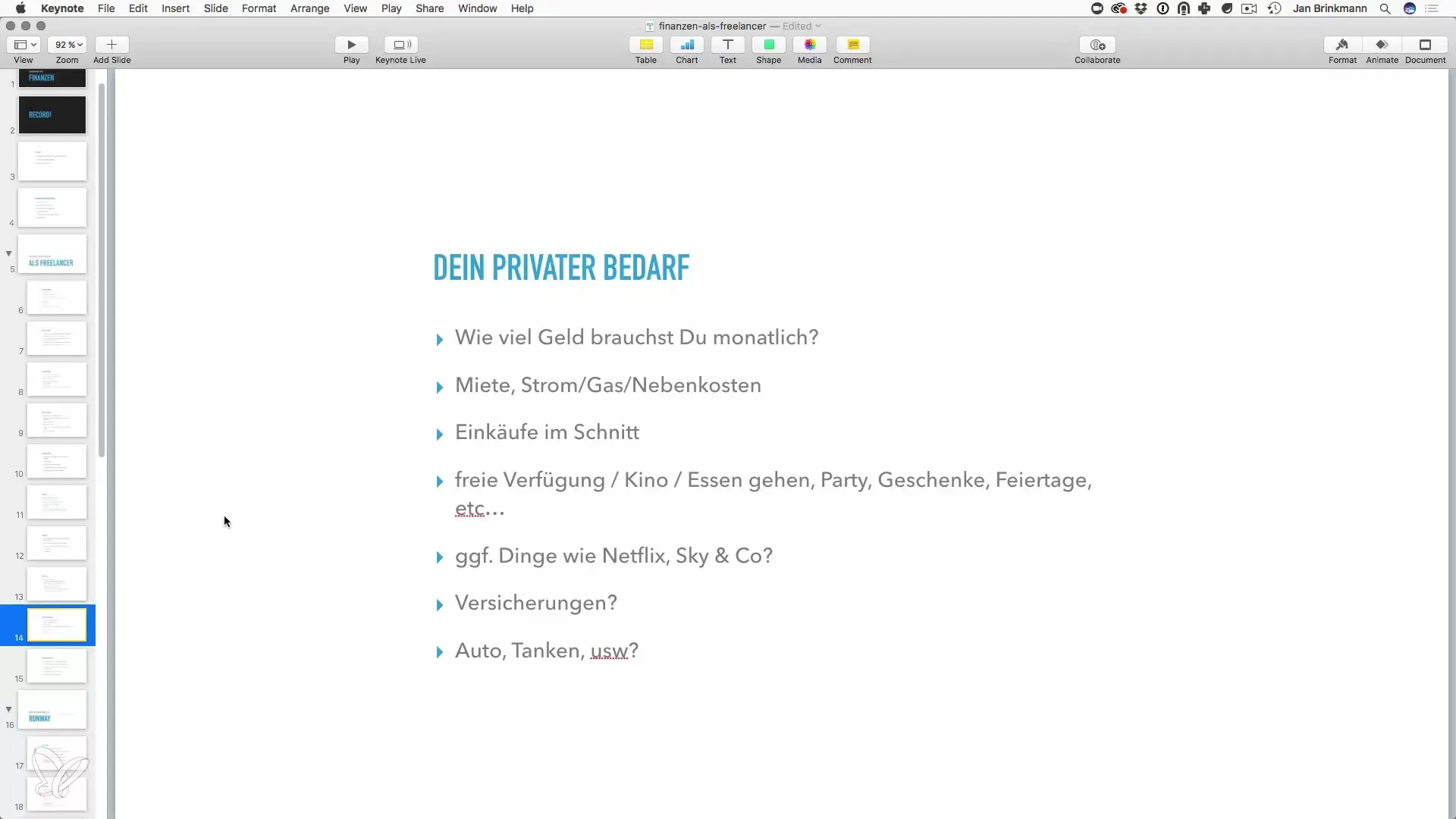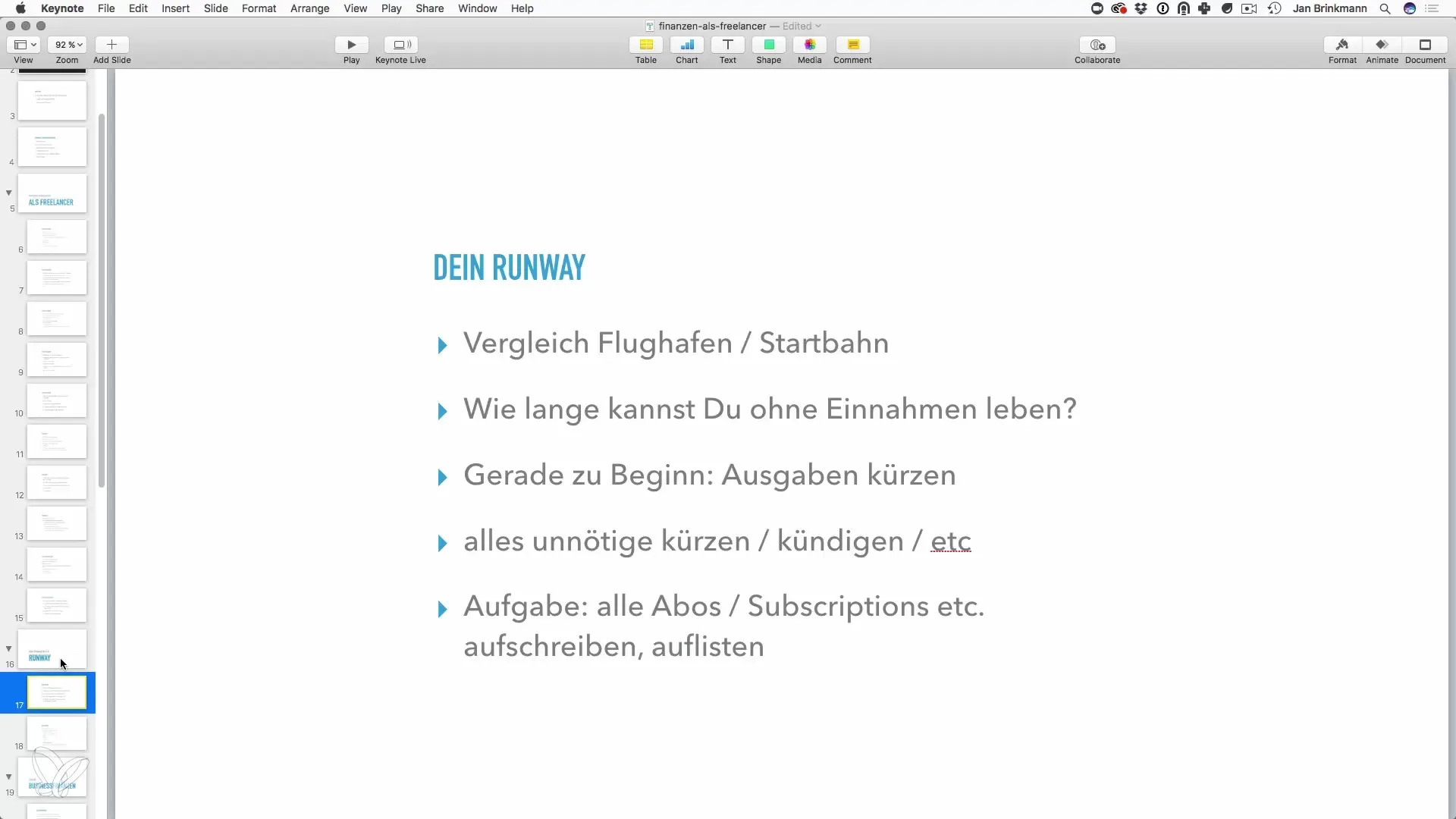For Freelancers, it is crucial to maintain a financial overview. The question is: How long can you survive without new income? A financial runway provides you the answer to this question. This guide takes you step by step through calculating your monthly expenses and helps you ensure your financial security.
Key Insights
- Knowing your fixed costs is essential.
- All expenses – both fixed and variable – should be recorded.
- A minimum reserve of funds provides security in case of income loss.
- The fewer expenses you have, the longer you can survive without new income.
Step-by-Step Guide
Inventory of Your Fixed Costs
To understand your financial base, you start with a detailed list of your fixed costs. This includes rent, electricity, gas, internet, and similar ongoing expenses. Calculate these monthly costs accurately to get a realistic overview of your financial obligations.

Budgeting Variable Expenses
In addition to fixed costs, there are many variable expenses that you can vary from month to month. These include leisure activities like going out, dining, or cinema. Estimate how much you need on average per month for these expenses and create a buffer for unforeseen costs.
Identifying Subscription and Luxury Expenses
Consider which subscriptions and services you truly need. Platforms like Netflix or Spotify are popular, but not necessarily essential for your survival. Decide which ones you can cancel.
Insurance and Additional Costs
Remember to also consider your insurance and potential loan payments. Some of these costs may be billed annually or semi-annually, but you should still allocate a monthly reserve for them.
Keeping an Eye on Consumer Debt
Consumer debt should also be recorded. These business expenses can help you keep track of your total liabilities, which is important for making financial decisions.
Calculating the Financial Runway
Now that you have listed all expenses, you move on to calculating your financial runway. Create a table where you can record your monthly expenses and your current financial reserves. The financial runway is the duration you have before your financial resources are depleted.

Including Buffer and Taxes
Remember to consider tax effects in your calculations. It is advisable to plan for a buffer of about 40% for taxes. This gives you a sense of security and allows you to realistically assess your financial situation.
Identifying Optimization Opportunities
Once you have an overview of your expenses and financial runway, you can consider possible adjustments. Are there expenses you can reduce or eliminate entirely? Maybe you don't need the entire list of subscriptions, or you can minimize some expenses in the coming months.
Summary – Financial Runway for Freelancers: How to Keep an Eye on Your Expenses and Maximize Your Survival Time
Creating a financial runway is crucial for your future as a freelancer. By accurately determining your monthly expenses and reducing unnecessary costs, you can extend your survival time without new income. Use the steps presented to sustainably strengthen your financial security.
Frequently Asked Questions
Which fixed costs should I calculate?All monthly expenses such as rent, electricity, and internet should be recorded.
How do I find out what variable expenses I have?Estimate your monthly expenses for leisure and unexpected costs to get a clear overview.
What are “luxury expenses” in this context?Luxury expenses are non-essential subscriptions like Netflix or Spotify that you should reconsider.
Why is consumer debt important?It affects your monthly obligations and should therefore be included in the runway calculation.
How much buffer should I plan for taxes?A buffer of about 40% is recommended to financially secure any tax obligations.


